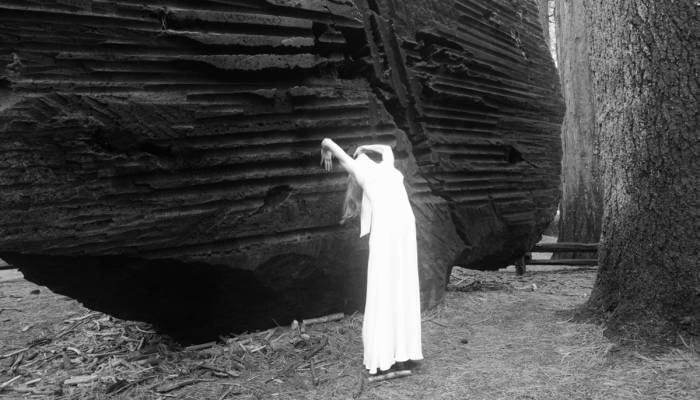The story of the writer and her ghostwriter (who was a ghost)
Pearl Curran and her phantom muse Patience Worth, whom she invoked at a Ouija board, tell us a lot about the relationship between an author and her ghosts.
When ‘the muse’ was still well respected and held a fundamental place in the act of writing, all writers had a ghostwriter. Literature thrived in three dimensions: the muse that dictated, the writer that mediated, and the text. The story of Pearl Curran and her phantom muse Patience Worth – whom she invoked at a Ouija board – is a great way of illustrating the relationship between a writer and their ghost (or muse), in the most exotic and literal manner.
In 1913, the writer Pearl Curran had her first successful communication with a dead person through a Ouija board. “From this initial correspondence, she wrote (or depending on your perspective, transcribed) millions of words she attributed to a 17th century poet who called herself Patience Worth,” wrote Ed Simon for the Public Domain Review. The surprising thing about the case is that the historical novels, religious tracts and lyrical poems of considerable literary note that Curran published from then on were received with open arms by academics as authentic examples of American literature transmitted from beyond the grave. Even more surprisingly, readers and critics agreed that this was the work of a woman who swore that she had been dead for more than two and a half centuries.
There is, of course, more than one possible explanation. The first is that the writings are authentic documents that provide spectacular evidence of human survival after death. The second is that there was an intriguing and incredible deception that equally fooled academics, critics and editors (which does not discredit Curran, but rather emboldens her merits). But there is a third possibility that would appear the most viable: that the texts were literary productions improvised by a genius who really believed that she was a medium for a muse in the ever after. Meaning that she inadvertently adopted the role of medium as a kind of heteronym and that gave her the courage to publish her works.
Pearl Curran was born in 1883, toward the end of a century that inherited a bizarre religious diversity. By the time she began to write, at the beginning of the 20th century, occultist experiments had been undertaken by serious writers such as William James, W.B. Yeats and Fernando Pessoa. The figure of Patience Worth appeared at the perfect time, and because, due to their passivity and pureness, women were considered ideal receptacles for receiving messages from ‘the other side’. Let’s not forget Madame Blavatsky.
But Curran’s case is different. Mediums such as Blavatsky always separated their own writings from those attributed to spirits, and the latter were short; a few verses or isolated comments. Curran, however, produced an incredible amount of work, all attributed to Patience Worth. There are hundreds of pages of poems, letters and novels, such as Telka, The Sorry Tale, Hope Trueblood, The Pot upon the Wheel, Samuel Wheaton, An Elizabethan Mask, some of which ran up to more than 600 pages. If it were all an esoteric trick, it was an extremely complex and difficult one.
Even though we don’t have to explain Curran’s prolific career, which had such a strange background, and suggest that Patience Worth was a real person, there is the possibility that Curran understood authorship in a non-conventional way and was really ahead of her time. Her work provides an occasion to ask ourselves where inspiration comes from, how do writers work (where does their work come from?) and what is important when we read a text. Roland Barthes’ The Death of the Author could be a good clue (both the reader and the academic should feel comfortable with the idea that the author is fictitious).
For many years, Curran’s (or Worth’s) writings were destined to be forgotten due to their supposed origin (although, without comparing their literary worth, that never happened to W.B. Yeats, who attributed some of his poems to a spirit called Leo Africanus, and whom he also found through a Ouija board), but luckily her works are once again being revisited. The origins of her texts should not be an impediment to their rational study or to their structural qualities; they should instead be a fascinating account of the relationship between an author and her ghosts, the source of a plethora of questions regarding authorship and the reasons for which we read.
The story of Curran and Worth, that prolific supernatural duo, is a fascinating gem that recounts a forgotten moment in history when academic and charlatans, the rational and the occult, erudition and magic mixed together in one discourse. “What for the rest is subconscious, for the writer it becomes the muse, they are two names for the same thing,” well said Ray Bradbury.
Related Articles
When ancient rituals became religion
The emergence of religions irreversibly changed the history of humanity. It’s therefore essential to ask when and how did ancient peoples’ rituals become organized systems of thought, each with their
Larung Gar, the valley that is home to thousands of Buddhist monks
If we think about the monastic life it is very probable that we think about solitude, seclusion, silence and a few other qualities whose common denominator is the appropriate isolation for mediation
Dialogue with the Dalai Lama on science and spirituality
The Dalai Lama has been interested in science since he was a child. Over the years he’s visited many laboratories and has attended conferences that discuss consciousness from the scientific point of
A New Year's resolution for the earth
Worrisome quantities of waste are generated by human populations. Especially in cities, these have reached unprecedented and alarming levels. A largely uncontrolled practice, it affects everything on
The Dark Mountain Project: or how literature can confront ecocide
One impulse from a vernal wood May teach you more of man, Of moral evil and of good, Than all the sages can. Wordsworth, “The Tables Turned” (fragment) Words are elementary. The only reason we can
Are there no women in the history of philosophy?
Do only men philosophize? This could sound like a silly question, but if we quickly review the names of philosophers, from Aristotle to Slavoj Žižek, it would appear to be an exercise that is
Things that are about to disappear: photography as environmental conservation
Cristina Mittermeier is the founder of the International League of Conservationist Photography (iLCP), and is at the front of a modern movement to use photography with environmental purposes. Her work
Architecture And Music; An Affair That Acts On The Matter
A composition is like a house you can walk around in. — John Cage Perhaps music, more than the art of sound, is the art of time. That’s why its communion with space, and architecture, is so often so
Psycho-geography (On The Ritual Casting of a City)
Mrs. Dalloway walked down the streets of London guided by an “internal tide” that made her stop somewhere, enter a store, turn at the corner and continue her journey, as if she were adrift. La dérive
A Theme Park Inspired by Hayao Miyazaki is About to Open …
One of animation’s most spectacular exponents, Hayao Miyazaki, is the artist who transformed the direction of traditional animation forever.










